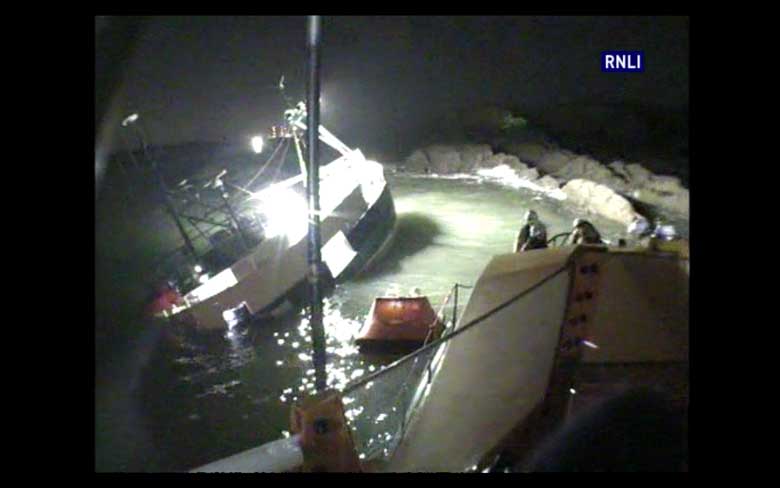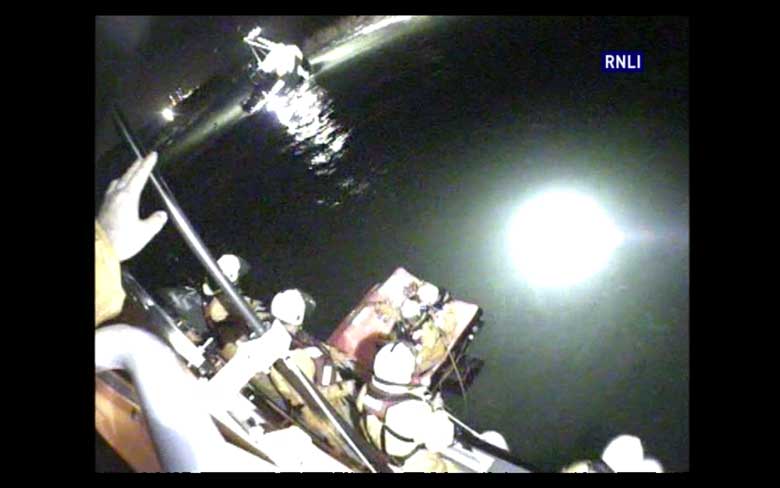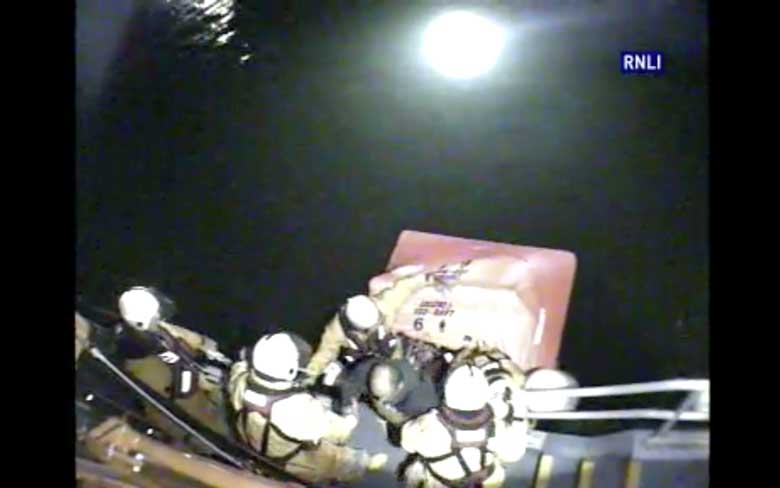Sinking in the dark



When RNLI crew members in Angle, Pembrokeshire were jolted awake by the beeping of pagers at 2am, they faced a race against time to rescue the crew of a sinking fishing boat.
Waking to a direct page from the Coastguard on a chilly winter morning, the Angle volunteers knew immediately that the situation was serious. Unless the shout is a matter of life or death, the crew are paged by the Lifeboat Operations Manager.
Coxswain Lewis Creese sped along the 3-mile dirt track that leads to Angle Lifeboat Station; in the station’s Land Rover. He picked up the crew along the way from the ends of their drives. In the Land Rover, the crew found out a fishing boat was sinking rapidly off Rat Island. Having hit a rock, the skipper had tried to ground the vessel so that it could be salvaged but, half a mile from shore, had fouled a propeller. He and his four-strong crew were now stranded aboard a sinking vessel.
Reaching the lifeboat station, the RNLI volunteers threw on their gear and jumped aboard their Tamar class lifeboat Mark Mason. For Assistant Mechanic Dave Dillane, this shout was particularly worrying – he had worked on the same fishing vessel before becoming an RNLI crew member. ‘I knew the best thing to do was to stay calm and do my job so we could get there and rescue them quickly: says Dave, who entered the vessel’s reported position into the lifeboat’s navigation system to help them locate it in the darkness.
The lifeboat volunteers found the fishing boat in shallow waters, taking on water rapidly. Most of the fishing crew were still onboard, but the boat was listing heavily and the deck was already flooded. Knowing the situation could take a turn for the worse at any moment, the skipper had deployed the life raft. Now some of the crew were already abandoning ship.
Aware he had to act fast if they had any chance of saving the vessel, Coxswain Lewis brought the Mark Mason alongside. As soon as they were next to the boat, Crew Members Nigel Berry and Adam Stringer climbed aboard with the salvage pump to begin pumping the water out to prevent it from sinking. Adam says: “It goes against all of your natural instincts to get on a boat listing to that extent and has taken on that much water! But in this situation, you don’t even think about it – you just get on with doing your job, trying to keep the crew safe and save the boat.”
However, by the time the salvage pump was set up, the boat was taking on water quicker than the pump could expel it. The vessel, despite the volunteers’ best efforts, was beyond saving. The skipper ordered everybody to abandon ship. Making sure everybody was off the boat, Adam and Nigel jumped into the liferaft and to safety. After making sure everybody was safe, they paddled the liferaft alongside the Mark Mason and helped the cold, wet and disheartened fishermen aboard to warm up.
At 3.35am, the Tamar class returned to Angle station. Stepping onto land, the grateful but heavily disappointed fishermen were met by Milford Haven port Authority, while the lifeboat crew washed their craft down. They returned home to bed – just a few hours before they had to get up again for work.





